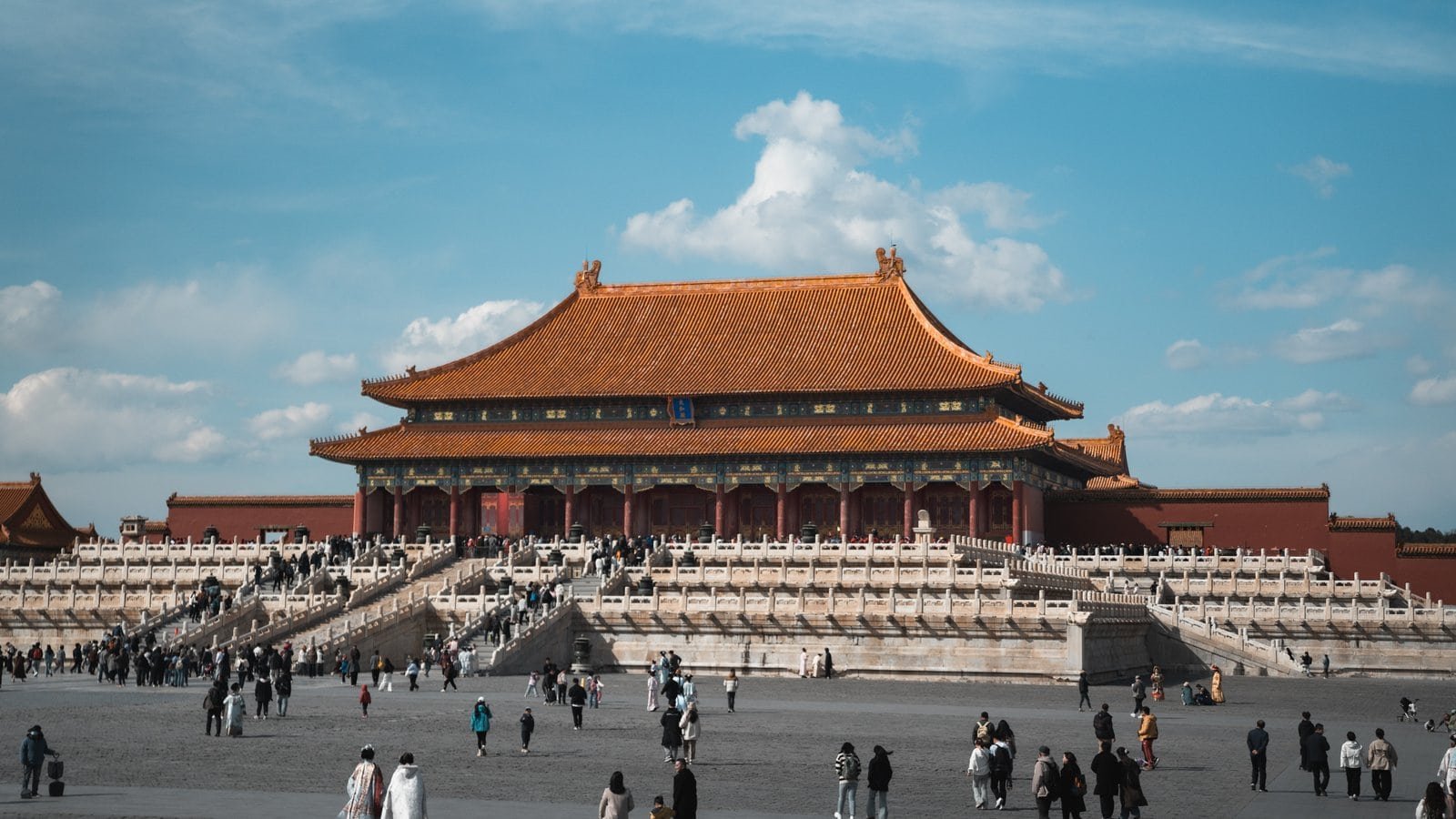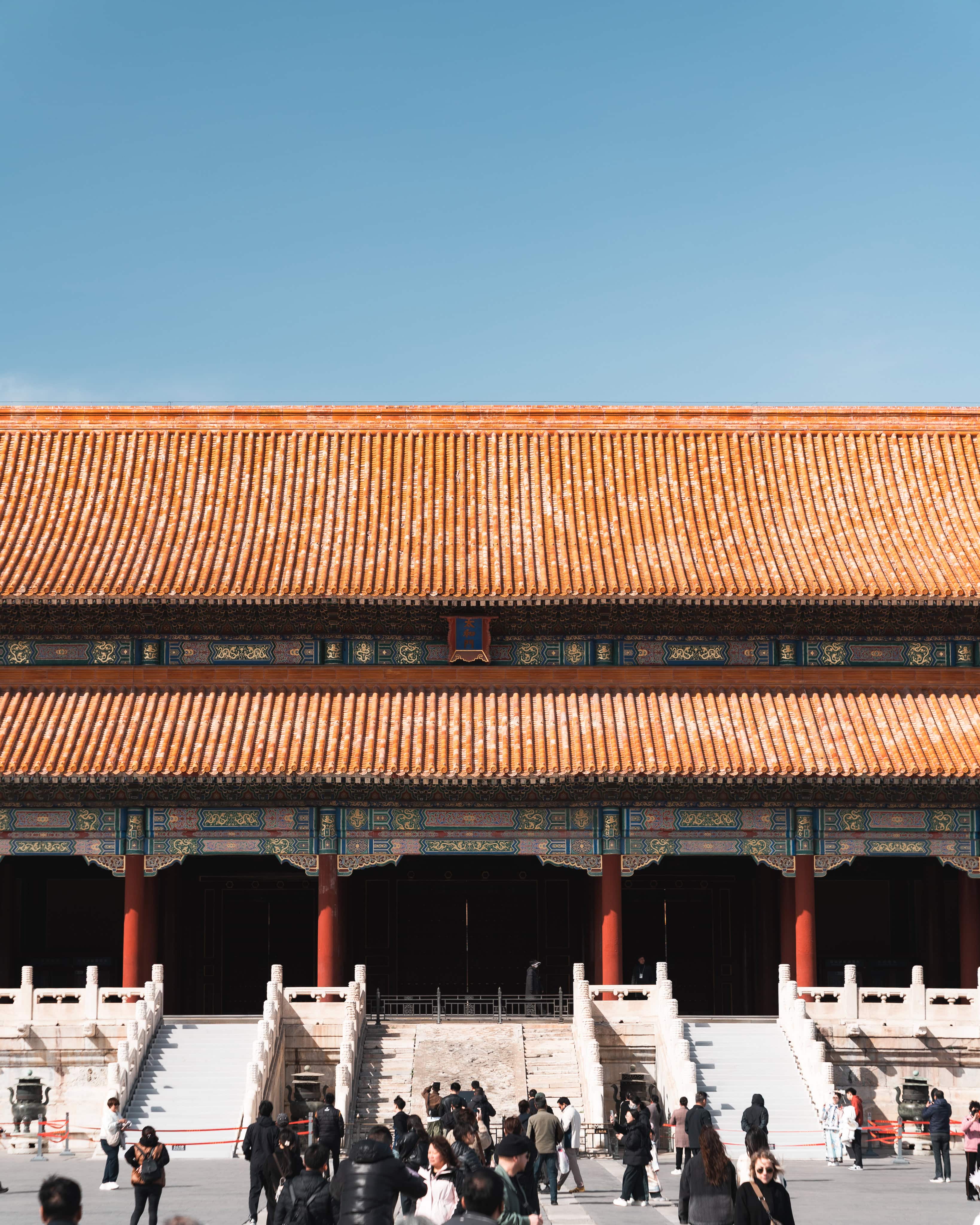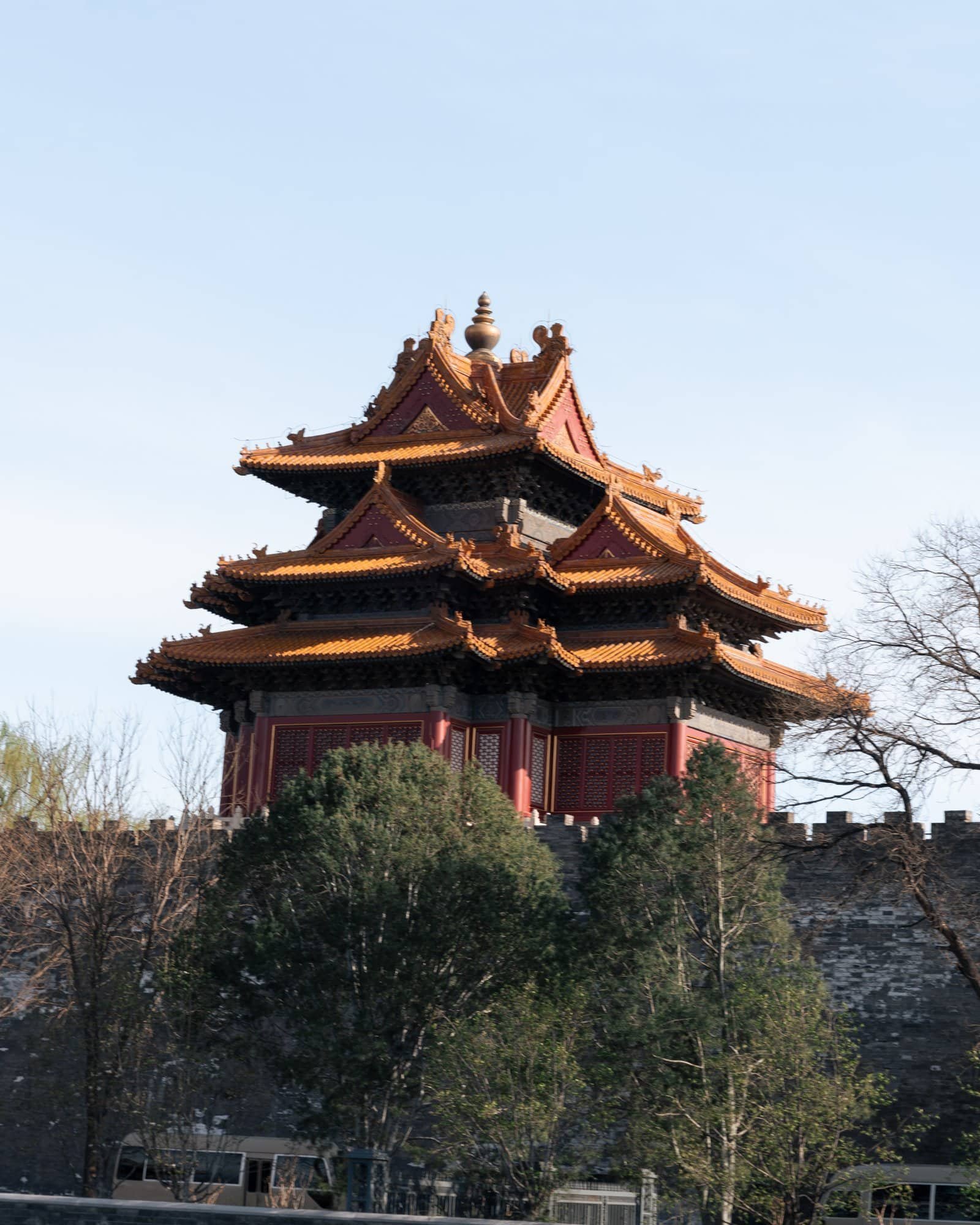In the centre of Beijing stands one of the most impressive buildings in world history: the Forbidden City. Once a symbol of imperial omnipotence, this huge palace complex was closed to the public for centuries, but still fascinates visitors today with its unique architecture, profound symbolism and eventful history. As one of the world’s largest preserved wooden structures, the Forbidden City is one of China’s most important cultural monuments and an absolute highlight of any trip to Beijing.
Location and significance in Beijing's cityscape
The Forbidden City (Chinese: 紫禁城, Zǐjìnchéng) is located in the centre of Beijing and forms the heart of the old city. Directly north of the famous Tian’anmen Square, the vast complex covers an area of around 720,000 square metres. It is completely surrounded by a ten-metre-high wall and a 52-metre-wide moat, which are symbols of protection and seclusion. The palace’s geographical orientation strictly follows the principles of feng shui: it opens to the south, with the Meridian Gate (Wǔmén) serving as the main entrance. To the north lies Coal Hill (Jingshan Park), which acts as a natural shelter.
Historical background: Imperial Power and Isolation
Construction of the Forbidden City began in 1406, during the reign of the third Ming emperor, Yongle. The complex was completed in 1420 after only 14 years of construction. Over a million workers, including countless craftsmen and artists, were involved in the project. The aim was to create a worldly image of the Heavenly Palace — a place where the ‘Son of Heaven’ could reign in earthly splendour.
For almost 500 years, from the Ming to the Qing dynasty, the Forbidden City was the political and ceremonial centre of the Chinese empire. A total of 24 emperors resided here. Access was strictly forbidden to the population, hence the name ‘Forbidden City’. It was not opened to the public as a ‘palace museum’ until the end of the imperial era in 1925.
Architecture and symbolism: the principle of harmony
The Forbidden City is the world’s largest surviving complex of traditional Chinese wooden architecture. Consisting of around 980 buildings, it contains the symbolic number of 9,999½ rooms. The layout adheres to a strict, symmetrical axial principle, with the most significant buildings positioned along a north-south axis. Following Confucian principles of hierarchy, the political and ceremonial buildings are located in the south, while the living quarters of the imperial family are situated further north.
The roofs of the most important halls are covered with yellow, glazed tiles, as yellow was the colour of the emperor. Red walls symbolise luck and power. Mythical animal figures, such as dragons and phoenixes, can be seen everywhere, symbolising protection and divine legitimacy. No detail was left to chance: even the number of animals on the roof ridges corresponds to the rank of the building.
The most important buildings in the Forbidden City
Gate of Heavenly Purity (Qianqingmen):
This gate marks the transition from the outer to the inner courtyard, and important decisions were made here. Beyond it lies the private section of the palace, accessible only to the emperor, his family, and his closest servants.
Hall of Supreme Harmony (Taihedian):
This is the largest and most important building in the Forbidden City. Throne ascensions, weddings, and New Year ceremonies took place here. The emperor’s throne, adorned with dragon symbols, stands elevated in the centre of the hall, radiating unrestricted authority.
Hall of Intermediate Harmony and Hall of Preserving Harmony:
These two halls flank the Great Ceremonial Hall and served as places where the emperor could prepare for or examine officials for imperial service.
Imperial Gardens:
To the north of the Forbidden City are the Imperial Gardens, which feature ancient cypress trees, ornate rock formations and pavilions. These gardens served the imperial family as a place of relaxation and contemplation. The gardens were used by the imperial family for relaxation and contemplation.

The Palace Museum today: A UNESCO World Heritage Site and cultural asset
The Forbidden City has held this status since 1987. Now known as the Palace Museum, it is one of the world’s most visited museums. It attracts over 15 million visitors every year. Its collection comprises over 1.8 million artefacts, including antique clocks, bronzes, ceramics, paintings and valuable manuscripts. The preservation of the complex is an ongoing labour of love. Restorations are carried out using original techniques under strict monument protection.
Travelling tips: Admission, opening times and the best times to visit
The Forbidden City is open daily (except Mondays). Tickets should ideally be booked online in advance, especially during the high season (April to October). Visitors should allow at least three to four hours to explore the main areas of the complex. The crowds are smaller and the light is particularly atmospheric for photos if you visit early in the morning or late in the afternoon.
To enhance your visit, we recommend using an audio guide or joining a guided tour led by knowledgeable guides who can provide fascinating insights into topics such as imperial concubines and strictly regulated court etiquette.
Secrets and little-known facts
Some myths and secrets still shroud the Forbidden City to this day. For instance, the entire complex is organised according to cosmological principles. It is said to represent the centre of the universe, with the emperor acting as a mediator between heaven and earth. There are rumours of secret tunnels and shelters beneath the Forbidden City, although this has not been confirmed.
The number 9 is also omnipresent in the complex as it is considered an imperial number in Chinese culture. The main gates, for instance, have exactly 81 (9 x 9) door nails. According to legend, the number of rooms was deliberately set at 9,999.5 to avoid equalling the symbolic 10,000 rooms of the Heavenly Palace.
The Forbidden City is therefore far more than an architectural marvel — it is a cultural and symbolic monument that has shaped Chinese history for centuries. Its splendour, complexity and significance make it an essential destination for anyone wanting to understand China’s past. Whether you are interested in history, architecture, or culture, a visit to the Forbidden City offers a glimpse into a world of fascinating stories, rituals, and unparalleled splendour.














